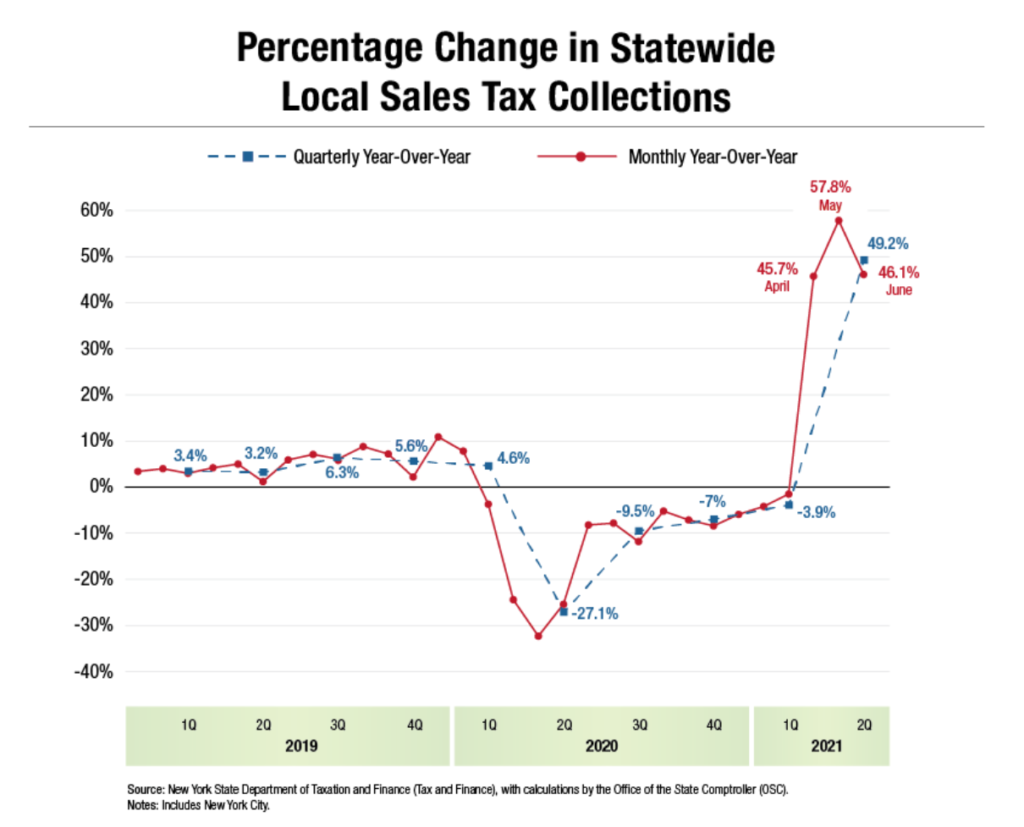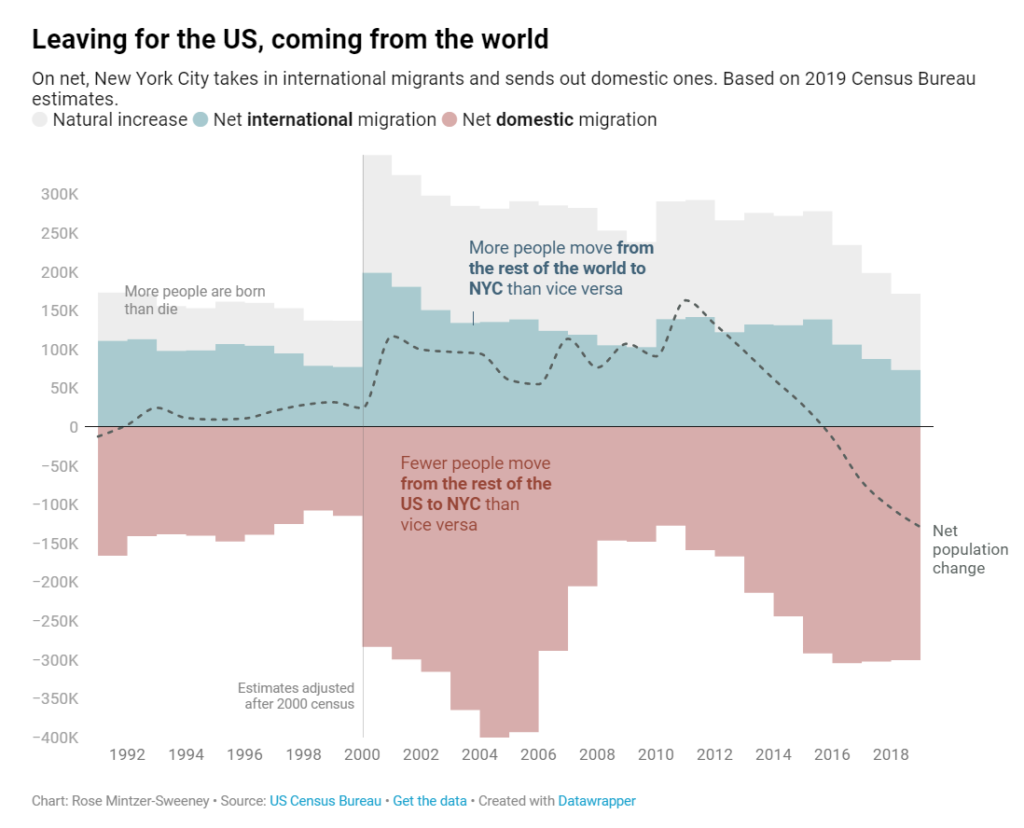Graphic:

Excerpt:
Sales tax revenue for local governments in New York state rose by 49.2% in the second quarter (April to June 2021) compared to the same period last year, a dramatic increase from last year’s weak collections during the first wave of the COVID-19 pandemic, according to State Comptroller Thomas P. DiNapoli. Sales tax collections during this period grew by just over $1.6 billion and even surpassed collections reported during the second quarter of 2019, before the onset of the pandemic.
…..
The size of the increase largely reflects extremely weak collections in the April to June period of 2020. However, even compared to pre-pandemic collections for the same period in 2019, statewide collections in 2021 were up 8.7% or $396 million. Every region outside of New York City experienced two-year growth over 18%. The Mid-Hudson and North Country regions both reported increases of more than 29%.
Author(s): Thomas DiNapoli
Publication Date: 23 July 2021
Publication Site: NY State Comptroller



